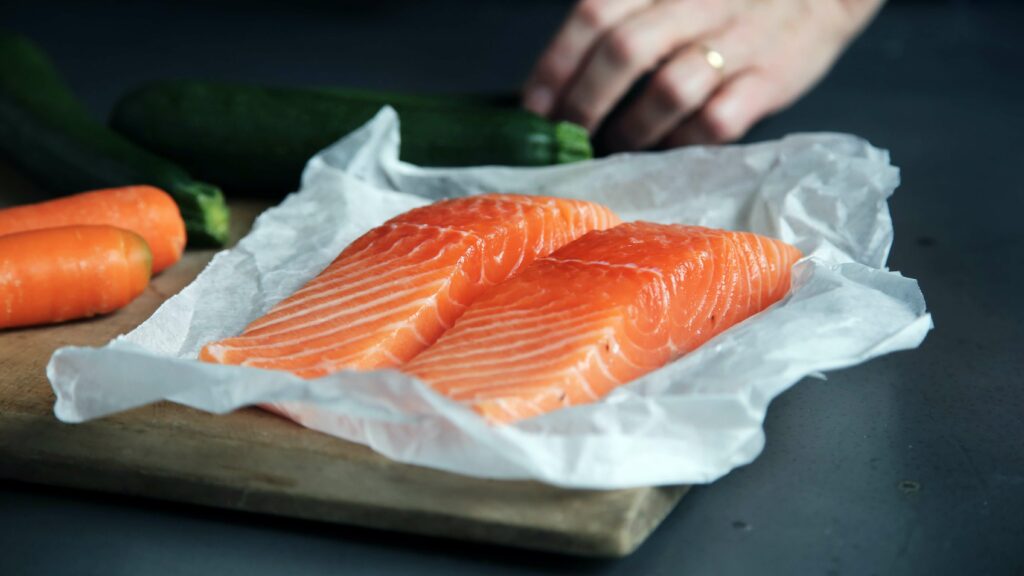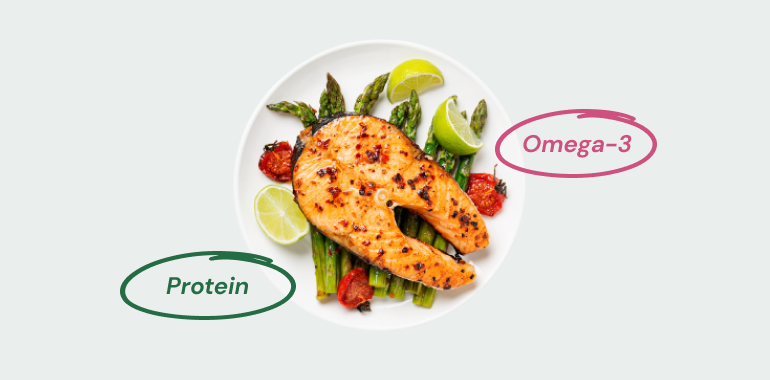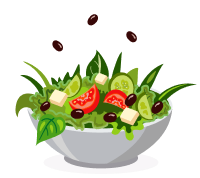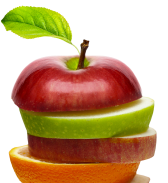Table Of Contents
Introduction: Is Fish Good for Weight Loss?
Fish is an overwhelmingly beneficial food to consume regularly and has many positive effects on your health. It is an excellent source of healthy fats, vitamins, and minerals essential for the good functioning of the body. Eating it can provide you with benefits to your heart health, immune system, skin care, moods, and more.
But can eating fish also help you lose weight? So, diet plays a massive role in your overall weight-loss journey as no amount of exercise can make up for a bad diet – so what you eat matters.
In relation to this, research has found that fish consumption does indeed have beneficial effects on weight loss in addition to its correlation with other positive health outcomes like improved heart health. Therefore, adding fish to your diet may not only be delicious but also aid in promoting effective weight loss.
Consuming fish that contains antioxidants and macronutrients such as healthy fats has excellent long-term benefits for your health. The antioxidants help promote your energy levels to keep you active throughout the day, while the protein provides a sustained source of energy until your next meal.
Moreover, macronutrients like healthy fats found in fish can regulate your metabolism due to improved blood flow to the heart and brain.

The Health Benefits of Eating Salmon
Salmon is one of the richest sources of omega-3 fatty acids despite being regarded as an oily or fatty fish. Additionally, it is a fantastic source of potassium, selenium, B-complex vitamins, and powerful antioxidant carotenoids like astaxanthin.
Salmon is a fish rich in nutritional benefits. This is an impressive 236 calories in 6 oz salmon with 24 grams of protein. High in healthy polyunsaturated fats, it’s ideal for those looking to lower their LDL cholesterol levels and improve heart health. In addition, salmon boasts essential vitamins and minerals like vitamin C and magnesium, providing more than half of your daily requirement for Omega-3 fatty acids. This combination of nutrients makes salmon an important part of any balanced diet.
Salmon helps lose weight and promotes the start of metabolic syndrome
Salmon’s high concentration of Omega-3 fatty acids has been shown to influence satiety in overweight and obese patients trying to lose weight. Conversely, insulin resistance and significant weight increases are linked to metabolic syndrome.
Omega-3 supplements were thought to be beneficial in lowering insulin resistance, boosting the body’s antioxidant capacity, reducing the risk of diabetes, and aiding in weight loss.
It is a source of lean protein
Depending on the kind, a 3.5-ounce serving of salmon has between 18 to 26 grams of protein, comparable to a serving of ground beef of the same size.
According to research, people who consume more lean protein tend to acquire less weight over time than people who consume more red meat, chicken with skin on, and cheese. Furthermore, studies suggest that diets rich in protein are more satiating than diets lower in protein, which may result in ingesting fewer calories and aid in weight loss.
Salmon contains astaxanthin
The unique carotenoid called astaxanthin is what gives salmon its orangey-pink hue. It can also be found in lobster and shrimp. It belongs to the carotenoid family and has anti-inflammatory and antioxidant properties, similar to beta-carotene, which may be found in carrots and sweet potatoes.
Astaxanthin may protect skin cells from UV rays, prevent oxidation, and promote the health of the heart, joint, eye, and prostate in people, according to a preliminary study.
With no known harmful effects, astaxanthin is considered safe to eat from natural sources like salmon and shrimp. According to laboratory studies, astaxanthin is significantly more easily absorbed when dietary fats like the omega-3 fatty acids in salmon are present.
Healthy skin, hair, and nails can be achieved by eating salmon
Salmon is one of the most potent sources of B vitamins, boasting 12 important types. Not only does it support digestive health and cellular metabolism, but these micronutrients are vital for the general well-being of hair, nails, and skin.
Containing just over 200 calories in a 6 oz serving, fatty acids naturally present in salmon are essential components in forming healthy cell membranes to help lend strength and shine to your hair, nails, and every inch of your skin. To maintain maximum beauty benefits, make sure you include salmon in your routine diet.
Salmon’s nutrients contribute to a lower risk of cancer
Sadly, there are more and more cases of cancer. In addition, cancer risks are higher for women than for men. For instance, 1 in 8 American women currently develops breast cancer. Therefore, your best bet as a woman is to take every possible measure to lower your risk of developing cancer.
Although there can be no assurances, nutrition significantly impacts overall health and well-being. For example, numerous minerals, like selenium, have been related to reducing cancer risk.
The consumption of salmon helps to prevent osteoporosis
Compared to men, women typically have a higher natural risk of developing osteoporosis. Once a woman enters menopause, her risk rises due to the elevated drop in estrogen levels. The trace mineral selenium, which helps to protect bones, is abundant in salmon.
Eating salmon can help prevent this condition because new research has proved that diets high in omega-3 fatty acids may be suitable for bone health. Therefore, you should eat at least two servings of salmon and oily fish every week, even though the ideal amount still needs to be discovered.
You won’t bloat if you eat salmon
Women constantly want to feel and look their best. Unfortunately, many proteins can give you an inflammatory or bloated feeling. However, due to the abundance of omega-3 fatty acids and other minerals in salmon, the fish has many anti-inflammatory effects and may even lessen inflammation.
So eating salmon before going out or right before putting on your bikini won’t make you feel swollen, which in our eyes is an A+.
Now that you understand the nutritional profile of salmon, why consider adding it to yours?

What is Salmon for Women’s Health?
Salmon is a fish that is well known for being nutrient-rich. High concentrations of minerals, vitamin B12, and omega-3 fatty acids are present. These are the fundamental elements of each nourishing and well-balanced meal. Omega-3 fatty acids are also very advantageous for the health of women. You may achieve these vital vitamin needs by eating just two servings of salmon every week.
Why should you consume omega-3-rich fish? According to studies, omega-3 fatty acids are good for women’s health in a variety of ways. For example, these polyunsaturated fatty acids are crucial for maintaining healthy bodily functions and lowering your chance of developing heart disease.
Is salmon skin good for weight loss? – Yes! It contains a high level of the mentioned omega-3 fatty acids! Here is a brief summary to give you an idea of how helpful consuming these fatty acids is to your health. You receive 4,123 mg of omega-3 fatty acids in a single serving.
Thus, after just two meals, you consume enough of these fatty acids to meet your weekly needs. Also, eating foods rich in essential nutrients is the best method to get them. However, it’s different from taking a supplement of fatty acids!
Salmon helps you ease menstrual pain
You may not be aware that omega-3 fatty acids lessen the severity of primary dysmenorrhea or cramps. These discomforts, which are brought on by the uterus’s contractions while a woman is on her period, can be challenging to treat.
Fortunately, research indicates that dysmenorrhea can be managed by consuming extra omega-3-rich meals like salmon. These fatty acids aid in lowering pain and even the typical ibuprofen intake during periods due to their anti-inflammatory characteristics.
Omega-3 reduces postpartum depression
When it comes to treating severe depression and its symptoms, omega-3 fatty acids are effective. So increase your intake of salmon and let your brain benefit from these nutrient-dense fatty acids if you are a new mother experiencing postpartum blues.
More clinical trials must be conducted before the recommended dosage can be confirmed, although studies indicate they can help lower the risk of and treat postpartum depression.
The omega-3 fatty acid has been linked to a decrease in premature birth
Preterm births that occur between 34 and 37 weeks of pregnancy have been significantly decreased by omega-3 supplementation at that time. Salmon has high levels of these fatty acids, so consuming it frequently while a fetus develops will help prevent premature birth and lower the risk of miscarriage.
Also, read – The Gut Microbiome and Mental Health: What You Need to Know
How to Choose the Best Kinds of Salmon for Your Diet?
When it comes to selecting the best kind of salmon for your diet, there are a few factors to consider. First, try choosing wild-caught varieties over farmed ones to maximize the benefits of salmon intake. For example, wild-caught King Salmon is an excellent Omega-3 fatty acid and protein source.
Another tip is to select fresh or frozen salmon that has been cleaned or filleted; this will reduce your exposure to toxins found in fish.
For those looking for the best salmon for weight loss, choose low-fat options such as Sockeye and Coho. These varieties contain fewer calories but still provide plenty of essential vitamins and minerals. Ultimately, how you choose salmon for your diet depends on your individual health goals.
Pink salmon
Is pink salmon good for weight loss? Definitely YES!
Pink salmon is an excellent dietary choice for those looking to lose weight, as it boasts a high content of protein and healthy omega-3 fatty acids while maintaining low-calorie levels.
The resulting nutritionally dense food helps the body absorb essential nutrients like Vitamin D and Selenium while sustaining energy levels throughout the day. Further, the heart-healthy properties contained in pink salmon help reduce inflammation which can aid in weight loss. Due to these benefits, it has become increasingly popular amongst those seeking to shed some extra pounds.
A 3-ounce serving of pink salmon from a can have less than one gram of saturated fat, according to data from the U.S. Department of Agriculture. This characteristic makes it perfect for sprinkling on salads, scooping straight from the can, or mashing pink into salmon cakes. So if you’re looking for a low-oil, sustainable, and healthful solution, pink salmon is the best choice.
Chum Salmon
Compared to sockeye or king salmon, chum salmon does not enjoy the same popularity. However, despite its unattractive appearance, more interest is paid to this delectable type.
According to a study, Salmon roe provides a substantial nutritional profile of protein, antioxidants, and omega-3 fatty acids.
Atlantic Salmon
Atlantic salmon is a type of fish prized for its flavor and texture, and it stands out from other popular species like chum and pink salmon.
It contains a higher oil content than the other two, giving it a more prosperous, savory taste and imparting a flakier texture. Its meat is usually characterized by a lighter, orange-colored hue likely caused by the diet of voracious krill shrimps in their ocean life.
As far as salmon goes, Atlantic has unparalleled quality that has made it one of the most sought-after types on the market today.

Three Healthiest Ways to Prepare Salmon
Sometimes cooking food in particular ways can result in the addition of calories from excess fats or carbohydrates. Here are three healthy ways to serve salmon, offering you many choices regardless of your chosen cooking style.
1. Poached Salmon.
Salmon is poached when it is cooked in liquid that is simmering slowly in a skillet on the stove. You can either poach your fish in wine or broth or simmer it in water seasoned with your preferred herbs and seasonings.
Your salmon will be prepared within a short period of time because poaching takes little time. Although it can also be served warm, poached salmon is frequently served cold. In any case, you get a lovely, delicate fish.
2. Baked Salmon.
You can bake salmon filets and steaks in the oven in a skillet or on parchment paper. Using parchment paper makes cleanup easier and prevents the fish from sticking.
When cooking fish, either simply or with seasonings, baking doesn’t add any extra calories or fat to the fish, making it a healthy cooking method. However, utilizing thick, calorie-dense sauces might alter the nutritional value of your fish and make it harder to adhere to your dietary restrictions.
It is true that baking takes a little bit longer than other culinary techniques. Accordingly, depending on the temperature you choose, plan on your fish spending 20 to 30 minutes in the oven.
3. Grilled Salmon
Grilling is regarded as healthy because it does not necessitate the addition of additional fat other than a thin layer of oil, on the grill. Salmon is ideal for grilling because the meat doesn’t come apart after cooking, especially when compared to white fish.
A broiler oven should be your solution. Stay within your salmon, whether you grill or broil it. The overall cooking time is about 10 to 15 minutes.
Is Smoked Salmon Good for Weight Loss?
Smoking salmon can still be a nutritious diet despite having fewer omega-3 fatty acids than fresh or canned salmon. The fish is initially brine-cured before being dried somewhat in order to prepare it. It then spends some time in smoke produced by burning wood chips in a smoker.
If you don’t have a smoker, you can purchase pre-packaged smoked salmon, smoked salmon on a grill, or even smoked salmon inside. Although it can also be used as a component in some dishes, smoked salmon is frequently eaten as a nutritious snack.
For a savory snack, serve smoked salmon slices on whole-grain crackers with a spoonful of cream cheese and a few capers on top.
Is Salmon in a Can Good for You?
Salmon in a can may be a convenient and inexpensive way to add this nutritious fish to your meals.
Canned salmon contains protein, vitamin D, calcium (from the bones), and omega-3 fats. Omega-3 fatty acids are suitable for the heart and newborns’ developing brains. However, while canned salmon is packed with adequate protein, minerals, and other nutrients, a few factors can limit its health.
The sodium content is often high; additionally, the omega-3 fatty acids found in salmon can rapidly degrade when exposed to air or light. Although this will not make you sick, it certainly reduces the nutritional value of the salmon that you are consuming.
Therefore, paying attention to packaging information as well as using it up within a few days of opening will help ensure maximum benefits from canned salmon.
Are Salmon and Rice Good for Weight Loss? – You Need to Know This
Salmon and rice are an excellent combination for those looking to lose weight. Not only does salmon offer essential vitamins, but it is also loaded with protein, which can help satisfy appetite without the need to snack on unhealthy snacks throughout the day.
Salmon and rice are excellent dishes for those looking to stay healthy and reduce their environmental footprint. This balanced meal is an excellent source of high-quality salmon protein and healthy fat from avocados.
Being a good source of the omega-3 fatty acids DHA and EPA, salmon is a great addition to any diet since it supports heart, joint, and brain health. Likewise, with plenty of fiber and B vitamins, brown rice is a fantastic source of carbohydrates and is ideal for providing slow-release energy.
- The nutrient-dense carbohydrates come from the combination of rice and kimchi, making this dish a powerhouse of nutrition. Not only that, but by utilizing leftovers while incorporating this hearty meal into your diet, you can effectively reduce food waste and do your part to help the planet.
Additionally, salmon is extremely low in calories and fat – making it a great protein source for those trying to lose weight. Rice is also a nutrient-dense food that provides essential vitamins, minerals, and carbohydrates – but what makes it unique when paired with salmon is its low glycemic index (GI) score.
Low GI foods help slow down the body’s digestion process, helping you feel fuller longer while avoiding sudden sugar spikes and crashes. All in all, eating salmon and rice can be a great addition to any dieter’s regimen since it offers a filling meal that will provide vital nutrients while allowing them to achieve their weight loss goals.
How Much Should You Eat Salmon?
Fish is excellent for the body. It is a high-nutrient, low-calorie protein source that includes omega-3 fatty acids, which are suitable for your heart and brain. But can something extraordinary be harmful in excess?
Even fish in the “best options” category have some mercury. But, except for young children and women who are pregnant, trying to get pregnant, or breastfeeding, high mercury levels rarely negatively impact most people’s health.
High mercury concentrations can harm a developing fetus or harm a young child’s nervous system. You should follow the suggested levels of fish consumption if you’re planning on getting pregnant or even if you’re of childbearing age and may become pregnant. Mercury can also linger in your body for up to a year.
There are numerous advantages to salmon’s health. Omega-3 fatty acids, protein, and other vital elements can all be found in abundance in salmon. Salmon benefits include lowering the risk of some malignancies, dementia, Alzheimer’s, and cardiovascular disease. The fish also contains high levels of vitamin B12, vitamin D, potassium, and selenium.
Because of these benefits, many experts advise individuals to eat at least two servings (equaling 8 ounces) of salmon per week.
Of course, salmon can be consumed in excess. Salmon is a fatty fish, so eating too much of it can cause weight gain and other health issues, just like eating too much of anything else. In addition, salmon contains mercury, which can be dangerous in high doses even if its levels are relatively lower than those of other forms of fish. Therefore, we urge you to have a healthy, balanced diet.
As a result, it’s crucial to consume salmon in moderation and to choose wild-caught salmon if it’s an option. You should also modify your salmon intake in light of your age and any dietary restrictions based on the following suggestions.
Can You Eat Salmon Every Day?
Eating salmon daily provides numerous health benefits for those looking for a concentrated dose of nutrients. In addition, consuming salmon is associated with a lower risk of chronic diseases, such as cardiovascular disease and stroke.
Rich in Omega-3 fatty acids, the regular consumption of salmon has been shown to reduce inflammation throughout the body, contributing to overall well-being. Research suggests that fresh or frozen wild-caught salmon is best; canned options may contain higher levels of sodium and mercury.
According to Harvard University, experts concur that eating fish like salmon every day is preferable to eating beef every day. Registered nutritionist Serena Ball agrees with that. “Sometimes I hear worries about mercury. However, many of the most popular fish, including salmon, trout, tilapia, and most shellfish, are low in mercury. As a result, consumers who eat a range of seafood, particularly options with low mercury levels, need not be concerned “.
The advantages of eating seafood outweigh any possible risks because it is a high source of selenium.
If you’re looking to balance your diet and get essential vitamins and minerals so your body can function at peak capacity, adding salmon to your list of weekly foods may be an ideal choice.
12 Healthy Salmon Recipes for Weight Loss
Do you want to include chicken in everything that constitutes good protein? Look no further; salmon is the obvious solution. It is the ideal entry-level fish if retaining more seafood in your weekly meal is a priority for your healthy diet because it is adaptable, cooks quickly, and doesn’t require much work to prepare.
Salmon is the perfect blank canvas on which to experiment with flavor and spice, whether you want to use curry and sriracha, garlic, lemon, herbs, honey, garlic, and sesame, or pretty much anything in between.
We have prepared for you 12 ideas on how to cook salmon at home quickly, tasty, and most importantly, as healthy as possible:
- Grilled Salmon & Cucumber, Fresh Herb & Feta Salad.
- Baked Salmon in Foil with Lemon.
- Healthy Lemon Garlic Salmon.
- Salmon Salad Power Bowls.
- Baked Salmon Strips with Parsley & Lemon.
- Baked Salmon with Lemon Dill Sauce.
- Salmon Burgers with Avocado.
- Grilled Salmon with Salsa Verde.
- Teriyaki Salmon with Pineapple Rice.
- Smoked Salmon Pinwheels.
- Crispy Baked Salmon Patties.
- Cilantro Lime Grilled Salmon Fillets.











Very informative article! I found the answer to my question is salmon good for weight loss. Thank you!
Hi,Kate!
Appreciate your positive feedback 🤗